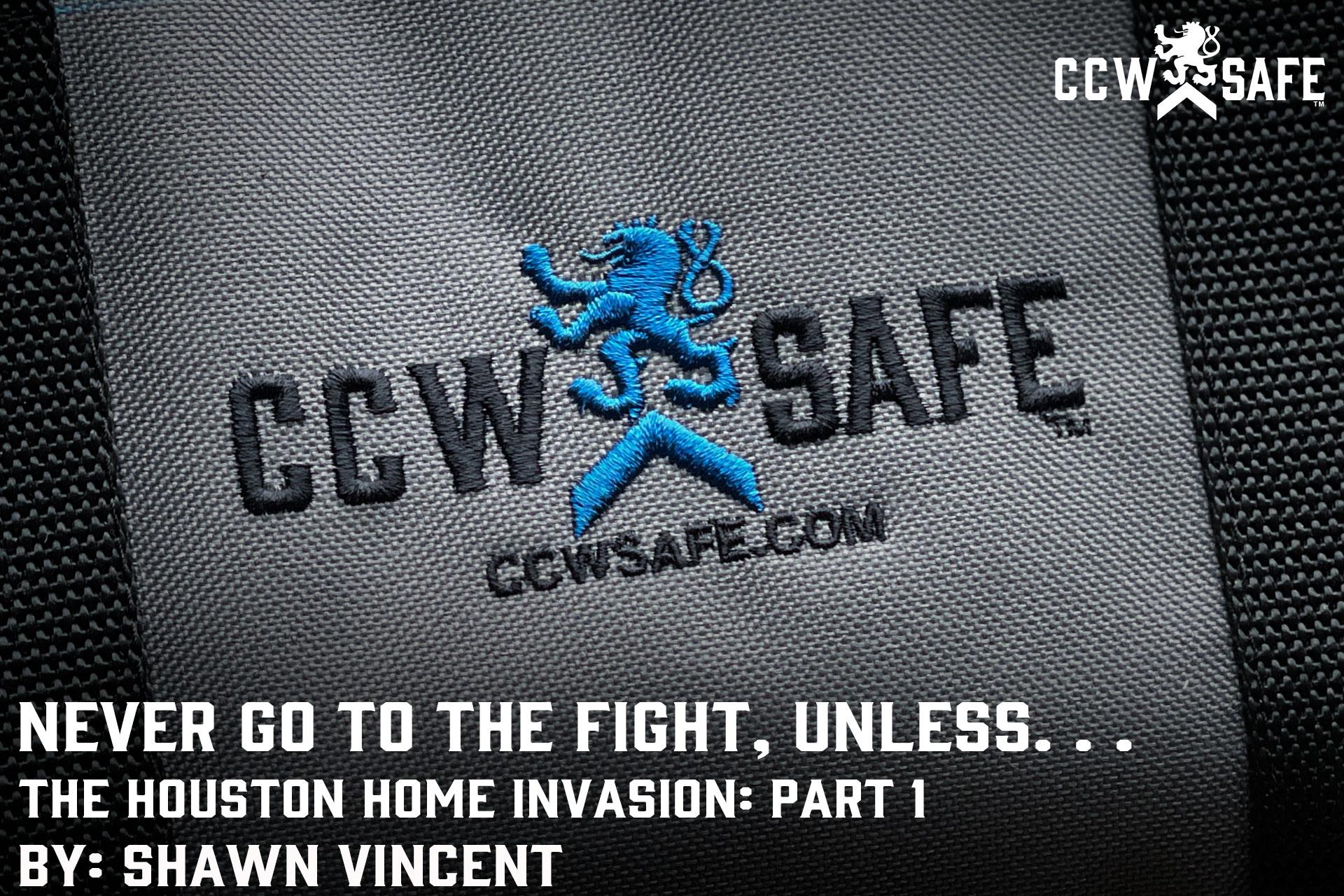
Posted on November 26, 2021
Never Go To The Fight, Unless. . . The Houston Home Invasion: Part 1
Never Go To The Fight, Unless. . .
The Houston Home Invasion: Part 1
Here’s a headline designed the grab the attention of any armed defender: “Son shoots home invasion suspect in the head while sisters hide in closet.” Firearms instructor Tatiana Whitlock told us, “This is one of those cases where I think a lot of new individuals coming into the world of concealed carry could very easily relate to the son and to acting as the son chose to act.” This chaotic engagement had all the theatrical flourishes of a Hollywood blockbuster: the hero arms himself and rushes to the aid of damsels in distress, a gunfight spills onto the streets, and the melee ends with the defender throwing himself onto the hood of a moving car, a car stolen by the surviving intruders as they flee.
Of course, this wasn’t a movie; it was real life. The defender wasn’t John Wick; he was a young man who armed himself and, outnumbered, dove headlong into a dynamic and chaotic tactical scenario. Earwitnesses to the event counted eleven shots fired. Tactical expert and CCW Safe contributor Steve Moses says, “The fact that he fired that many rounds and there was one apparent hit makes me think that, perhaps, accuracy was not in play that day.” Steve’s dramatic understatement drives home the point that the defender was likely not a marksman, and it was unlikely that he had any advanced training on infiltrating a structure and ending an armed hostage situation. The defender got lucky.
There’s a lot we don’t know about this case. We don’t know the name of the defender or the family he fought to protect. We don’t know the names of the intruders. There are conflicting press reports regarding whether there was a shootout or if all eleven rounds were fired by the defender. We don’t know how many of the intruders were armed.
Here’s what we do know. A little before midnight on April 9, 2019, the father arrived at his southwest Houston home in his Mercedes, and he was jumped by three intruders who were hiding in the bushes. They forced the father inside where two teenaged daughters who had been home alone were hiding in a closet. Moments later, the mother and the son arrived home. The son either armed himself and went inside or he went inside and armed himself. Either way, he chased the intruders out of the home, fatally shot one suspect in the head, and he leaped onto the hood of a moving car while the surviving intruders escaped.
There is a lot to discuss here: the training required to successfully engage in such a complex tactical scenario, the dangers of collateral damage during a shootout in a residential neighborhood, and the perils of chasing an intruder beyond the threshold of your home. We’ll discuss those themes in the coming weeks, but first, we have to address the defender’s decision to leave a position of relative safety and initiate an armed confrontation with unknown intruders.
The use of deadly force is justified in self-defense when the defender is credibly and imminently threatened with great bodily injury or death at the hands of an attacker. For deadly force to be justified, most statutes specify that the defender cannot be the provocateur — they can’t start the fight. For that reason, folks like attorney Andrew Branca often say things like “don’t go to the fight,” because leaving a place of safety to engage a threat could undermine a self-defense claim.
The Castle Doctrine tells us an armed defender faced with an individual or individuals who have forced their way into a home has no duty to retreat, can assume the intruders pose an imminent threat, and can use deadly force to protect themselves. The protections of the Castle Doctrine start to diminish, however, when a defender chooses to exit the home to meet a potential threat outside — or even they choose to leave a relative position of safety outside the home to meet a potential threat within.
A case out of Virginia drew public criticism in 2017 when a defender named William Andrew Sheets was charged with firing at and wounding intruders who had broken into his home. The local prosecutor, Roy Evans issued a statement to the Southwest Virginia Today newspaper that reported on the charges, to justify his decision to prosecute the defender. Evans writes:
It is clear that in most cases Virginia law allows you to use force to defend against intruders in your home. The reason is obvious — if an intruder enters your home while you are present there is potential danger to life. If that had been the case here, Mr. Sheets would not have been prosecuted. But that is not what happened here. He was not protecting himself or his home; he was trying to take the law into his own hands.
Evans goes on to explain that Sheets actually lived next door to the home that the intruders entered, although he still had possessions in the unoccupied house while his previous lease ran out. Sheets spotted the intruders from next door, armed himself, entered the house, engaged the intruders, and then pursued them off the property, shooting one “in the backside” as he fled.
Generally speaking, the law doesn’t allow for the use of deadly force for the protection of property, and shooting someone in the back is widely frowned upon. Self-defense law expert attorney Andrew Branca wrote about the Sheets case for CCW Safe. He says, “When you go to the fight, rather than the fight coming to you, that’s not going to look much like self-defense to a lot of people.” It’s true in the Sheets case, and it would be just as true if the house was actually Sheets’ current residence. As a concealed carrier, should you arrive home and suspect intruders are inside, stop and think before rushing inside. When assessing the legal risks involved with entering your home and confronting those intruders, consider your home an unoccupied structure.
The exception to this rule would be, of course, if you believe your home is not unoccupied. When the son in the Houston invasion arrived home, he had reason to believe that his father and sisters were in the house, and his decision to enter the dwelling was not motivated by self-defense, but rather, it was in defense of another — three others in fact. The use of deadly force is justifiable when defending another from great bodily injury or death and, in most places, for the purposes of preventing the commission of a forcible felony, although such circumstances are rare and fraught with legal risk. Steve Moses says it is generally a bad idea to enter a home to confront intruders, “Not unless there’s just some reason you absolutely have to go in there, and typically that’s going to be to protect another family member.”
Even when it is lawful to enter a dwelling to confront an armed intruder with deadly force, there are other serious tactical considerations. Steve Moses was a member of a Special Response Team that under court order forcibly entered homes, apartments, and mobile homes believed occupied by potentially violent persons in order to enforce Writs of Possession. Being successful, staying alive, and not accidentally killing the very people you’re trying to protect requires training beyond what the typical concealed carrier has pursued. In our next article, we’ll talk about the tactical realities of entering your home to confront intruders.
In the meantime, the lesson for concealed carriers is that it is never a good idea to leave a position of safety to confront intruders in an otherwise unoccupied home. Go to a safe place, call 9-1-1, and be a good witness so that law enforcement has the best chance of catching the criminals. If you feel loved ones are in danger, you may be morally and legally justified to enter the home and confront the intruders, but you should weigh your decision to act against the legal and tactical risks associated with such an extraordinary action.
